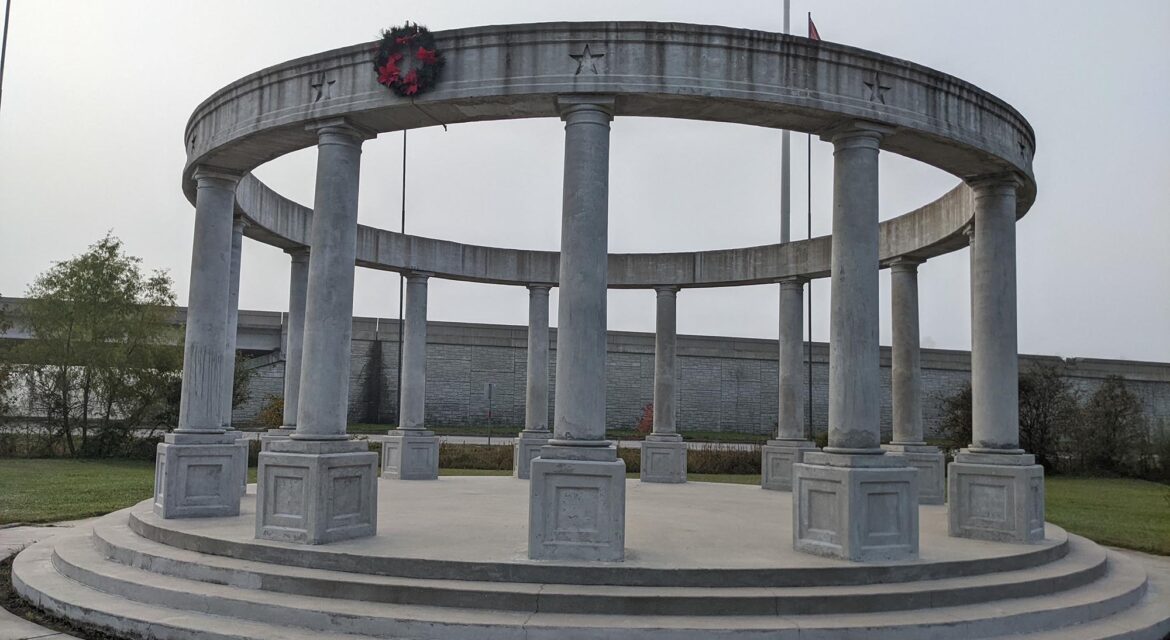 Located on private land in Orange, Texas, the Confederate Memorial of the Wind is a circular monument built in a simplified neoclassical style. Erected in 2013 by the Sons of Confederate Veterans, it has 13 columns arranged in a circle, one for each Confederate state. It is also set to have 32 flags representing U.S. Civil War units from Texas.
Located on private land in Orange, Texas, the Confederate Memorial of the Wind is a circular monument built in a simplified neoclassical style. Erected in 2013 by the Sons of Confederate Veterans, it has 13 columns arranged in a circle, one for each Confederate state. It is also set to have 32 flags representing U.S. Civil War units from Texas.
Many local residents objected to this commemoration of the Confederacy, which they see as a means of preserving a legacy of discrimination. Advocates argue that it celebrates the history of the South. Mentioned as a “bad idea,” the city approved the plan on the grounds of free-speech although the monument remains unfinished.
This compelled a dedicated effort to repurpose the Memorial of the Wind and finalized in a completely new way. Established in 2017, this endeavor is specifically focused on enabling alternative designs and commemorations connected to the Civil War that express the sacrifice made in an appropriate and acceptable manner to all. Regular protests of the monument highlight the different opinions and perspectives about this sort of repurposing.

 The passion on every side of the issue underscores the potential that the space and monument have to be a much different point of connection for the entire community. Re-establishing the monument both as a place where the legacy of the region could be remembered while also connecting with the modern community would ensure the monument becomes a hub of activity. With such strong feelings on how the monument is connected to this legacy in the wrong manner, the monument has not been able to realize its full potential, which the incomplete neoclassical style further showcases.
The passion on every side of the issue underscores the potential that the space and monument have to be a much different point of connection for the entire community. Re-establishing the monument both as a place where the legacy of the region could be remembered while also connecting with the modern community would ensure the monument becomes a hub of activity. With such strong feelings on how the monument is connected to this legacy in the wrong manner, the monument has not been able to realize its full potential, which the incomplete neoclassical style further showcases.
The structure and setup of the Confederate Memorial of the Wind could be utilized in many different ways, showcasing how monuments can be used, developed or repurposed to fulfill their potential. Successful efforts in any of these areas could see it completely change how the entire community interprets and embraces the monument, cultivating attention from across the region and beyond.

